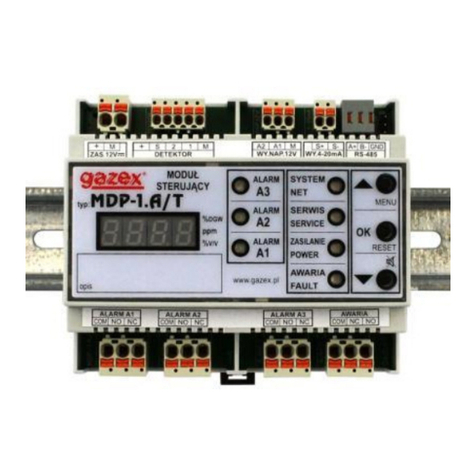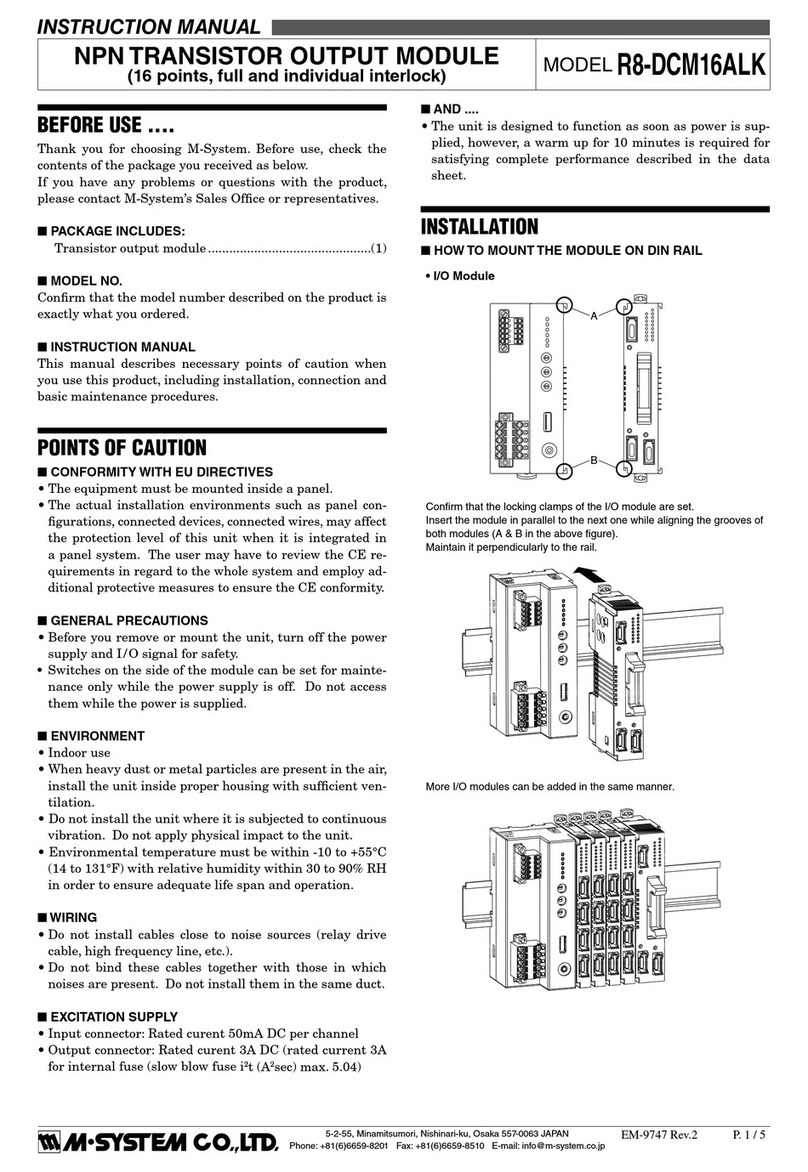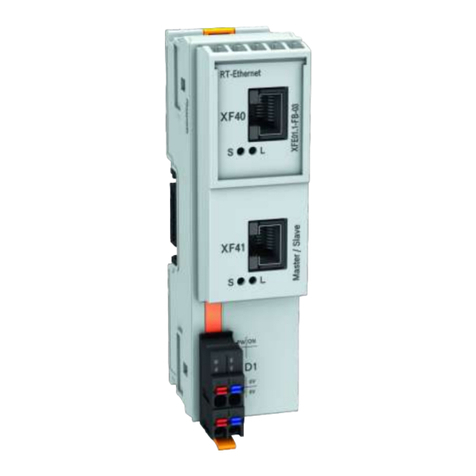LINK LABS LL-RLP-20 User manual

Low Power License-free RF Transceiver Module
LL-RLP-20 Datasheet
May 2015
www.link-labs.com

TABLE OF CONTENTS
INTRODUCTION ......................................................................................................................1
KEY FEATURES.......................................................................................................................................... 2
SPECIFICATIONS...................................................................................................................................... 2
MODULE FOOTPRINT............................................................................................................................ 4
PINOUT3..................................................................................................................................................... 5
PCB LAYOUT REQUIREMENTS............................................................................................................ 7
TRACE ANTENNA DESIGN................................................................................................................... 7
REGULATORY COMPLIANCE INFORMATION............................................................9
U.S./CANADA OEM LABELING REQUIREMENTS FOR END-PRODUCT ................................ 9
U.S./CANADA OEM END PRODUCT USER MANUAL STATEMENTS..................................... 9
FEDERAL COMMUNICATION COMMISSION INTERFERENCE STATEMENT......................10
INDUSTRY CANADA STATEMENTS .................................................................................................. 7
ETSI COMPLIANCE INFORMATION .................................................................................................. 8
IMPORTANT NOTICE ......................................................................................................... 14
DISCLAIMER............................................................................................................................................14

LL-RLP-20 Datasheet
www.link-labs.com Information contained in this document is subject to change without notification 1
CHANGE LOG
Date
Revision
Changed By
Description
05/07/2015
0.1
J. Wathen
Added “how to” description for separating trace antenna
from pcb.
08/04/2015
0.2
R. Zanski
Added I/O voltage limits, pin terminations, module regulator
specifications, and clarification of module keep-out area.

LL-RLP-20 Datasheet
www.link-labs.com Information contained in this document is subject to change without notification
2
INTRODUCTION
The LL-RLP-20 is a highly-integrated, low power, bi-directional radio transceiver module
optimized for use in the 915 MHz ISM and the 868 MHz ETSI frequency bands. The module
uses a Frequency Modulated Chirp (Semtech's LoRaTM modulation) to maximize range while
minimizing power consumption and interference.
KEY FEATURES
•Receiver sensitivity: -140 dBm
•Transmit power: 70 mW
•TX Peak Current: 122 mA
•RX Peak Current: 10 mA
•Sleep current: <1 μA (regulated/direct), 10 μA (unregulated)
SPECIFICATIONS
Frequency bands
915 MHz ISM (902 MHz –928 MHz), 868 MHz ETSI*
On-air data rate
183 bps to 37.5 kbps
Output power
Programmable: +18.5 to 4 dBm in 0.6 dB steps
Supply Voltage
3.5 V to 5.5 V
VCC
3.3 V1
2.7 - 3.6 V2
Onboard Regulator
VIN = 3.5 -5.5 V; Vout = 3.3 v
Max current = 250 mA
Iq= 7.9 uA
PSRR = 85 dB at 10 Hz, 70 dB at 1kHz,
40 dB at 100kHz
I/O Voltage
3.3 V typ.1
VIH: min = VCC * 0.8; max = VCC + 0.3
VIL: min = -0.3; max = VCC * 0.2
Tx Peak Current
122 mA
Rx Current
10 mA
Sleep Current
<1 μA (regulated/direct), 10 μA (unregulated)
Dimensions
24.5 mm x 29 mm; 2.66 mm thick with RF shield3
Operating Temperature
-40 to 85°C (industrial)
UART baud rate
Default: 115200 8n1
Notes:
1: Denotes voltages when using the onboard regulator
2: Allowable voltage when supplying a regulated VCC voltage to module

LL-RLP-20 Datasheet
www.link-labs.com Information contained in this document is subject to change without notification
3
3: Refer to 3-D model for more detailed module thickness dimensions
*
The following table depicts the applicable frequency bands within the 868 MHz band for “Non-
Specific Short Range Devices” specified in the ERC Recommendation 70-03. Note: Regulations can
vary by country and the manufacturer of the end device must ensure they are complying with local
laws and regulations.
Band
Edge Frequencies
Tx Power
Duty Cycle
Bandwidth
g1
868.0 MHz
868.6 MHz
+14 dBm
1% or LBT + AFA
600 kHz
g2
868.7 MHz
869.2 MHz
+14 dBm
0.1% or LBT + AFA
500 kHz
g3
869.4 MHz
869.65 MHz
+27 dBm
10% or LBT + AFA
250 kHz
g4
869.7 MHz
870 MHz
+14 dBm
1% or LBT + AFA
300 kHz
g4
869.7 MHz
870 MHz
+7 dBm
No requirement
300 kHz

LL-RLP-20 Datasheet
www.link-labs.com Information contained in this document is subject to change without notification
4
MODULE FOOTPRINT
Figure 1 : Module Footprint

LL-RLP-20 Datasheet
www.link-labs.com Information contained in this document is subject to change without notification
5
PINOUT3
Pin #
Name
Type
Description
1
GND
Ground
2
ANT1,2,8
RF I/O
RF path if not using U.FL connector
3
VBAT8
Input voltage
Optional unregulated supply voltage 3.5 to 5.5V
4
LDO_OUT5,8
Output voltage
Power digital. 3.3V
5
VCC
Input voltage
Regulated supply voltage. 2.5 - 3.3V
6
MD/FINED8
IO
FINE interface
7
nRESET7
I
External reset pin, active low
8
HOST_IO08
O
Status message indicator
9
GND
Ground
10
SDA06,8
IO
I2C0: serial data
11
SCL06,8
IO
I2C0: serial clock
12
SMISO1/SSCL16,8
IO
SPI1: master in slave out
13
SMOSI1/SSDA16,8
IO
SPI1: master out slave in
14
Reserved
NC
15
SCK16,8
IO
SPI1: serial clock
16
Reserved
NC
17
BOOT
I
NC = Boot normally, GND = Bootloader
18
nSS16,8
IO
SPI1: slave select
19
FINEC8
IO
FINE interface
20
Reserved
NC
21
Reserved
NC
22
Analog Input6,8
I
0 –VCC
23
HOST_RXIN4
I
UART interface: module Rx
24
HOST_TXOUT4
O
UART interface: module Tx
25
GND
Ground
Notes:
1. RF connection is via U.FL connector on upper left side of the module or pin 2
2. RF output is 50 Ω, DC blocking capacitor not required
3. All I/O signal voltages must follow the guidelines given in the specifications table. If necessary, pin
4 (3.3 OUT) may be used to supply an off-module level shifter
4. Default UART baud rate is 115200 8n1
5. If using VBAT, must tie LDO_OUT to VCC
6. For future use

LL-RLP-20 Datasheet
www.link-labs.com Information contained in this document is subject to change without notification
6
7. Pin has an internal pull-up
8. NC if not used

LL-RLP-20 Datasheet
www.link-labs.com Information contained in this document is subject to change without notification
7
PCB LAYOUT REQUIREMENTS
Since this module and its associated set of approved antennas has been certified by the FCC
and Industry Canada (IC) as a Modular Radio, the end user is authorized to integrate this
module into an end-product, and is solely responsible for the Unintentional Emissions levels
produced by the end-product.
In order to preserve the Modular Radio certifications, the integrator of the module must abide by
the PCB layout recommendations outlined in the following paragraphs. Any divergence from
these recommendations will invalidate the modular radio certifications and require the integrator
to re-certify the module and/or end product.
The module must be used with one of the approved antennas:
½-wave center-fed dipole antennas tuned for 915 MHz with a maximum gain of 1.9 dBi
or less, such as ANT-916-CW-HWR-SMA
Integrated trace antenna.
TRACE ANTENNA REFERENCE DESIGN
The red area in Fig. 2 represents the copper ground pour an end user must build into his/her
carrier board for the trace antenna to perform optimally. This ground pour continues as a solid
plane extending underneath the module, with the exception of the antenna area shown below.
Components may be placed above/below the copper ground pour, but the copper layer must
itself be uninterrupted. While a ground pour under the module is required, a trace and via keep-
out is recommended for the layer directly below the module. The bottom of the module is
masked, however there still remains a risk of shorts occurring if traces and vias are directly
under the module. If it is necessary to run traces or vias under the module ensure that all vias
are masked.

LL-RLP-20 Datasheet
www.link-labs.com Information contained in this document is subject to change without notification
8
Figure 2 : Trace Antenna Reference Design
If the user desires only to operate the module with an external antenna, it is possible to separate
the trace antenna. The module’s PCB is pre-scored along the line between the module and the
trace antenna for this purpose. To separate the trace antenna, use a sharp blade to cut along
the score-line, on both the top and bottom sides of the board. Then gently flex the antenna until
it separates. If the antenna does not separate readily, continue to cut the score-line until it can
be removed without applying excessive force. Link Labs is not responsible for damage caused
to the module during this procedure.

LL-RLP-20 Datasheet
www.link-labs.com Information contained in this document is subject to change without notification
9
REGULATORY COMPLIANCE INFORMATION
U.S./CANADA REGULATORY COMPLIANCE INFORMATION
To satisfy FCC RF Exposure requirements for mobile and base station transmission devices, a
separation distance of 20cm or more should be maintained between the antenna of this device
and persons during operation. To ensure compliance, operation at closer than this distance is
not recommended.
The antenna(s) used for this transmitter must not be co-located or operating in conjunction with
any other antenna or transmitter.
U.S./CANADA OEM LABELING REQUIREMENTS FOR END-PRODUCT
The module is labeled with its own FCC ID and IC Certification Number. The FCC ID and IC
certification numbers are not visible when the module is installed inside another device, as such
the end device into which the module is installed must display a label referring to the enclosed
module. The final end product must be labeled in a visible area with the following:
“Contains Transmitter Module FCC ID: 2ACT6LLRLP20”
“Contains Transmitter Module IC: 12201A-LLRLP20”
or
“Contains FCC ID: 2ACT6LLRLP20”
“Contains IC: 12201A-LLRLP20”
The OEM of the module must only use the approved antenna(s) listed above, which have been
certified with this module.
OEM END PRODUCT USER MANUAL STATEMENTS
The OEM integrator should not provide information to the end user regarding how to install or
remove this RF module or change RF Related parameters in the user manual of the end
product.
Other use manual statements may apply.

LL-RLP-20 Datasheet
www.link-labs.com Information contained in this document is subject to change without notification
10
FEDERAL COMMUNICATION COMMISSION INTERFERENCE STATEMENT
This equipment has been tested and found to comply with the limits for a Class B digital device,
pursuant to Part 15 of the FCC Rules. These limits are designed to provide reasonable
protection against harmful interference in a residential installation. This equipment generates
uses and can radiate radio frequency energy and, if not installed and used in accordance with
the instructions, may cause harmful interference to radio communications. However, there is no
guarantee that interference will not occur in a particular installation. If this equipment does
cause harmful interference to radio or television reception, which can be determined by turning
the equipment off and on, the user is encouraged to try to correct the interference by one of the
following measures:
Reorient or relocate the receiving antenna.
Increase the separation between the equipment and receiver.
Connect the equipment into an outlet on a circuit different from that to which the receiver
is connected.
Consult the dealer or an experienced radio/TV technician for help.
This device complies with Part 15 of the FCC Rules. Operation is subject to the following two
conditions: (1) This device may not cause harmful interference, and (2) this device must accept
any interference received, including interference that may cause undesired operation.
FCC CAUTION: Any changes or modifications not expressly approved by the party
responsible for compliance could void the user's authority to operate this equipment.
Conformité aux normes FCC Cet équipement a été testé et trouvé conforme aux limites pour un
dispositif numérique de classe B, conformément à la Partie 15 des règlements de la FCC. Ces
limites sont conçues pour fournir une protection raisonnable contre les interférences nuisibles
dans une installation résidentielle.
Cet équipement génère, utilise et peut émettre des fréquences radio et, s'il n'est pas installé et
utilisé conformément ment aux instructions du fabricant, peut causer des interferences nuisibles
aux communications radio.
Rien ne garantit cependant que l'interférence ne se produira pas dans une installation
particulière. Si cet équipement provoque des interférences nuisibles à la réception radio ou de
télévision, qui peut être déterminé en comparant et en
l'éteignant, l'utilisateur est encouragé à
essayer de corriger les interférence par une ou plusieurs des mesures suivantes:
Réorienter ou déplacer l'antenne de réception.
Augmenter la distance entre l'équipement et le récepteur.
Branchez l'appareil dans une prise sur un circuit différent de celui auquel le récepteur
est connecté.
Consultez votre revendeur ou un technicien radio / TV pour assistance.Avertissement

LL-RLP-20 Datasheet
www.link-labs.com Information contained in this document is subject to change without notification
11
Les changements ou modififications à cet appareil sans expressément approuvée par la
partie responsable de conformité pourraient annuler l'autorité de l'utilisateur de faire
fonctionner cet équipement.

LL-RLP-20 Datasheet
www.link-labs.com Information contained in this document is subject to change without notification
12
INDUSTRY CANADA STATEMENTS
This device complies with Industry Canada license-exempt RSS standard(s). Operation is
subject to the following two conditions:(1) this device may not cause interference, and(2) this
device must accept any interference, including interference that may cause undesired operation
of the device.
This device complies with RSS-210 of the Industry Canada Rules. Operation is subject to the
following two conditions: (1) this device may not cause interference, and (2) this device must
accept any interference, including interference that may cause undesired operation of the
device.
To reduce potential radio interference to other users, the antenna type and its gain should be so
chosen that the equivalent isotropically radiated power (e.i.r.p.) is not more than that permitted
for successful communication.
This device has been designed to operate with the antennas listed in the filing, and having a
maximum gain of 1.9 dBi. Antennas not included in this list or having a gain greater than 1.9 dBi
are strictly prohibited for use with this device. The required antenna impedance is 50 ohms.
Cet appareil est conforme avec Industrie Canada exempt de licence Rss standard(s).
Son
fonctionnement est soumis aux deux conditions suivantes :
(1) cet appareil ne peut causer
d'interférences, et
(2) cet appareil doit accepter toute interférence, y compris des interférences
qui peuvent provoquer un fonctionnement indésirable du périphérique.
Ce dispositif est conforme à la norme CNR-210 d'Industrie Canada applicable aux appareils
radio exempts de licence. Son fonctionnement est sujet aux deux conditions suivantes: (1) le
dispositif ne doit pas produire de brouillage préjudiciable, et (2) ce dispositif doit accepter tout
brouillage reçu, y compris un brouillage susceptible de provoquer un fonctionnement
indésirable.
Pour réduire le risque d'interférence aux autres utilisateurs, le type d'antenne et son gain
doivent être choisies de façon que la puissance isotrope rayonnée équivalente (e.i.r.p) ne
dépasse pas celle admise pour une communication réussie.
Cet appareil a été conçu pour fonctionner avec les antennes énumérées ci-dessous, et ayant un
gain maximum de 6,0 dB. Antennes pas inclus dans cette liste ou ayant un gain supérieur à 6,0
dB sont strictement interdites pour une utilisation avec cet appareil. L'impédance d'antenne
requise est de 50 ohms.

LL-RLP-20 Datasheet
www.link-labs.com Information contained in this document is subject to change without notification
13
ETSI COMPLIANCE INFORMATION
The use of radio frequencies is limited by national regulations. The radio module has been
designed to comply with the European Union’s R&TTE (Radio & Telecommunications Terminal
Equipment) directive 1999/5/EC and can be used free of charge within the European Union.
Nevertheless, restrictions in terms of maximum allowed RF power or duty cycle may apply.
The radio module has been designed to be embedded into other products (referred as “final
products”). According to the R&TTE directive, the declaration of compliance with essential
requirements of the R&TTE directive is within the responsibility of the manufacturer of the final
product. A declaration of conformity for the radio module is available from Link Labs, LLC on
request.
The applicable regulation requirements are subject to change. Link Labs does not take any
responsibility for the correctness and accuracy of the aforementioned information. National laws
and regulations, as well as their interpretation can vary with the country. In case of uncertainty,
it is recommended to contact either Link Labs’accredited Test Center or to consult the local
authorities of the relevant countries.

LL-RLP-20 Datasheet
www.link-labs.com Information contained in this document is subject to change without notification
14
IMPORTANT NOTICE
DISCLAIMER
Link Labs, LLC (hereafter referred to as “Link Labs”) reserves the right to make corrections, enhancements,
improvements and other changes to its products and services. Buyers should obtain the latest relevant information
before placing orders and should verify that such information is current and complete. All products (also referred to
herein as “components”) are sold subject to Link Labs’ terms and conditions of sale supplied at the time of order
acknowledgment.
Link Labs warrants performance of its components to the specifications applicable at the time of sale, in accordance
with the warranty in Link Labs’ terms and conditions of sale. Testing and other quality control techniques are used to
the extent Link Labs deems necessary to support this warranty. Except where mandated by applicable law, testing of
all parameters of each component is not necessarily performed.
Link Labs assumes no liability for applications assistance or the design of Buyers’ products. Buyers are responsible
for their products and applications using Link Labs components. To minimize the risks associated with Buyers’
products and applications, Buyers should provide adequate design and operating safeguards.
Link Labs does not warrant or represent that any license, either express or implied, is granted under any patent right,
copyright, mask work right, or other intellectual property right relating to any combination, machine, or process in
which Link Labs components or services are used. Information published by Link Labs regarding third-party products
or services does not constitute a license to use such products or services or a warranty or endorsement thereof. Use
of such information may require a license from a third party under the patents or other intellectual property of the third
party, or a license from Link Labs under the patents or other intellectual property of Link Labs.
Reproduction of significant portions of Link Labs information in Buyers’ data books or data sheets is permissible only
if reproduction is without alteration and is accompanied by all associated warranties, conditions, limitations, and
notices. Link Labs is not responsible or liable for such altered documentation. Information of third parties may be
subject to additional restrictions.
Resale of Link Labs components or services with statements different from or beyond the parameters stated by Link
Labs for that component or service voids all express and any implied warranties for the associated Link Labs
component or service and is an unfair and deceptive business practice. Link Labs is not responsible or liable for any
such statements.
Buyer acknowledges and agrees that it is solely responsible for compliance with all legal, regulatory and safety-
related requirements concerning its products, and any use of Link Labs components in its applications,
notwithstanding any applications-related information or support that may be provided by Link Labs. Buyer represents
and agrees that it has all the necessary expertise to create and implement safeguards which anticipate dangerous
consequences of failures, monitor failures and their consequences, lessen the likelihood of failures that might cause
harm and take appropriate remedial actions. Buyer will fully indemnify Link Labs and its representatives against any
damages arising out of the use of any Link Labs components in safety-critical applications.
In some cases, Link Labs components may be promoted specifically to facilitate safety-related applications. With
such components, Link Labs’ goal is to help enable customers to design and create their own end-product solutions
that meet applicable functional safety standards and requirements. Nonetheless, such components are subject to
these terms.
No Link Labs components are authorized for use in FDA Class III (or similar life-critical medical equipment) unless
authorized officers of the parties have executed a special agreement specifically governing such use.
Only those Link Labs components which Link Labs has specifically designated as military grade are designed and
intended for use in military/aerospace applications or environments. Buyer acknowledges and agrees that any military
or aerospace use of Link Labs components which have not been so designated is solely at the Buyer's risk, and that
Buyer is solely responsible for compliance with all legal and regulatory requirements in connection with such use.
Table of contents
Popular Control Unit manuals by other brands
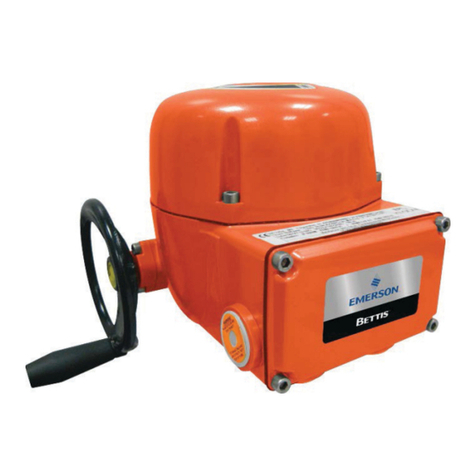
Emerson
Emerson Bettis OM13-SCE300 Installation, operation and maintenance manual

Wattcher
Wattcher WDAS-S3 quick start guide

IFM Electronic
IFM Electronic efector 300 SR5906 operating instructions
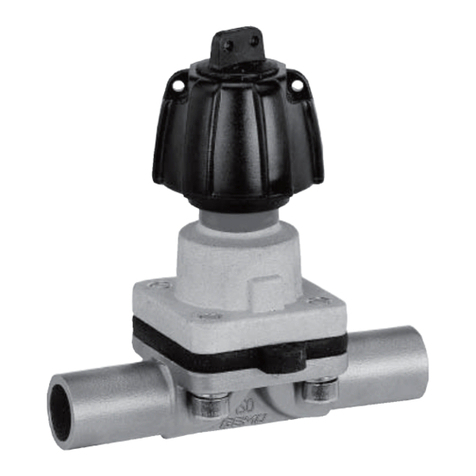
GEM
GEM 601 Installation, Operating and Maintenance Instrutions
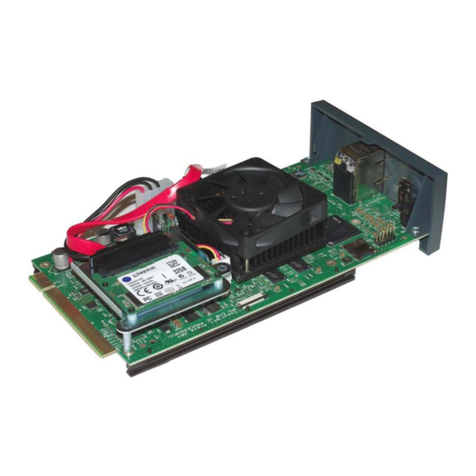
Avaya
Avaya Visio-IP500 instruction sheet
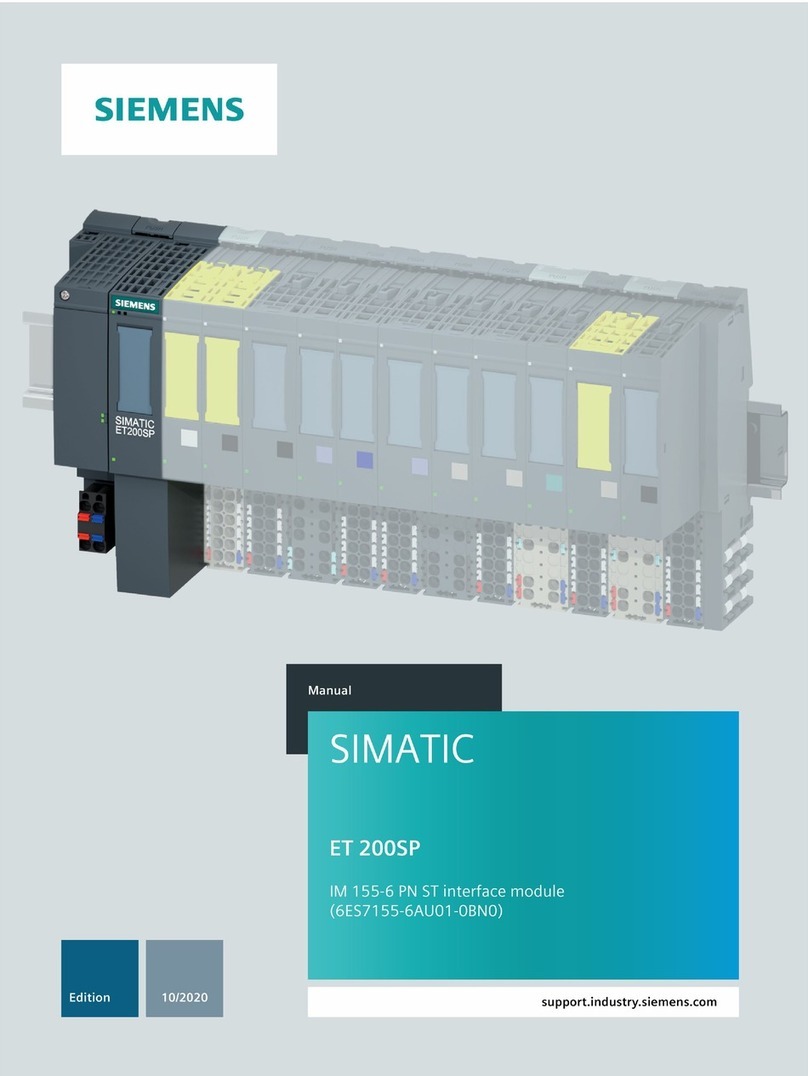
Siemens
Siemens IM 155-6 PN ST Equipment manual
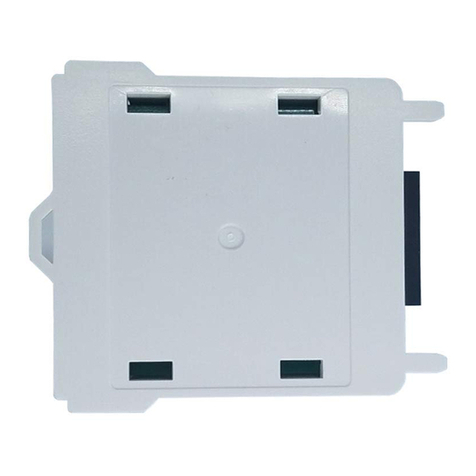
Radio Thermostat
Radio Thermostat USNAP RTZW-02 user guide
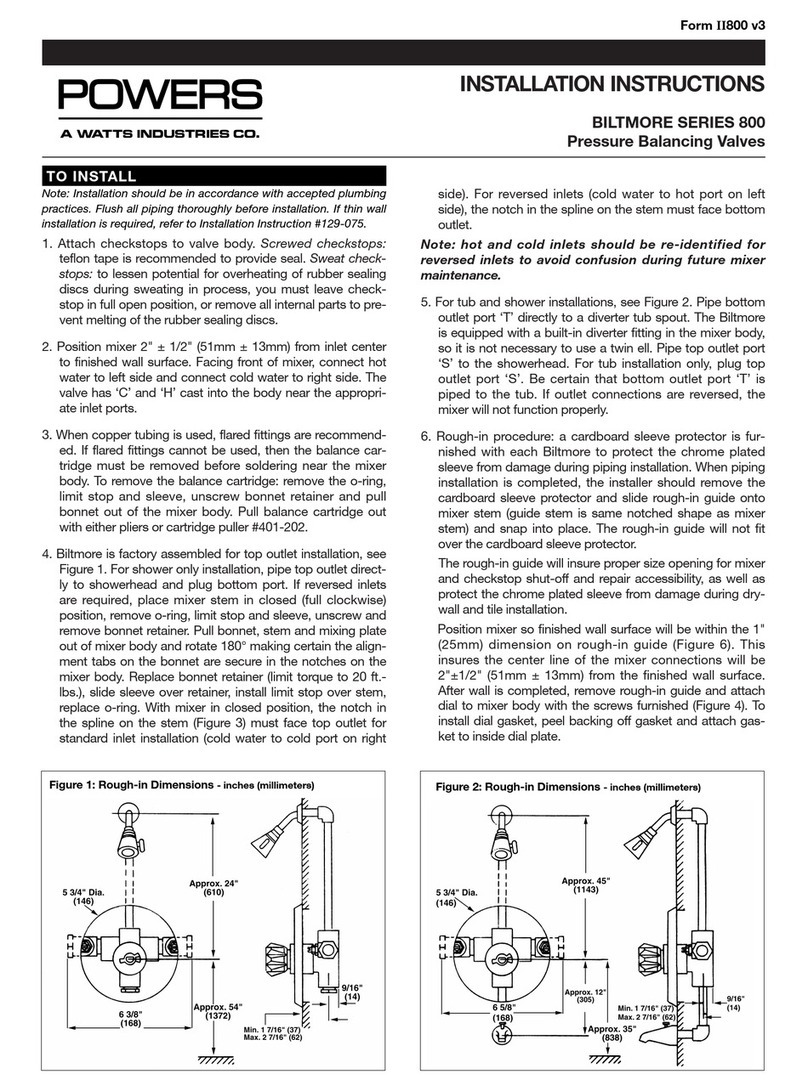
Powers
Powers BILTMORE 800 SERIES installation instructions

Juniper
Juniper T320 Guide
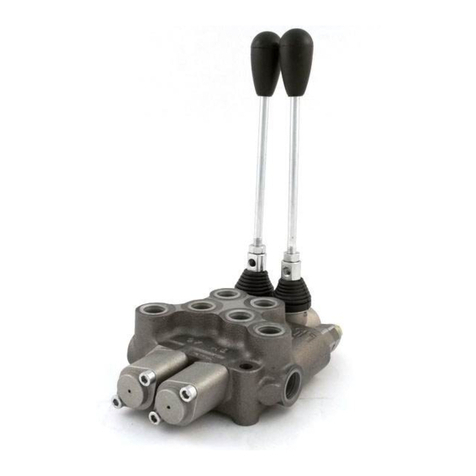
BLB hydraulic
BLB hydraulic BM40 Series instruction manual
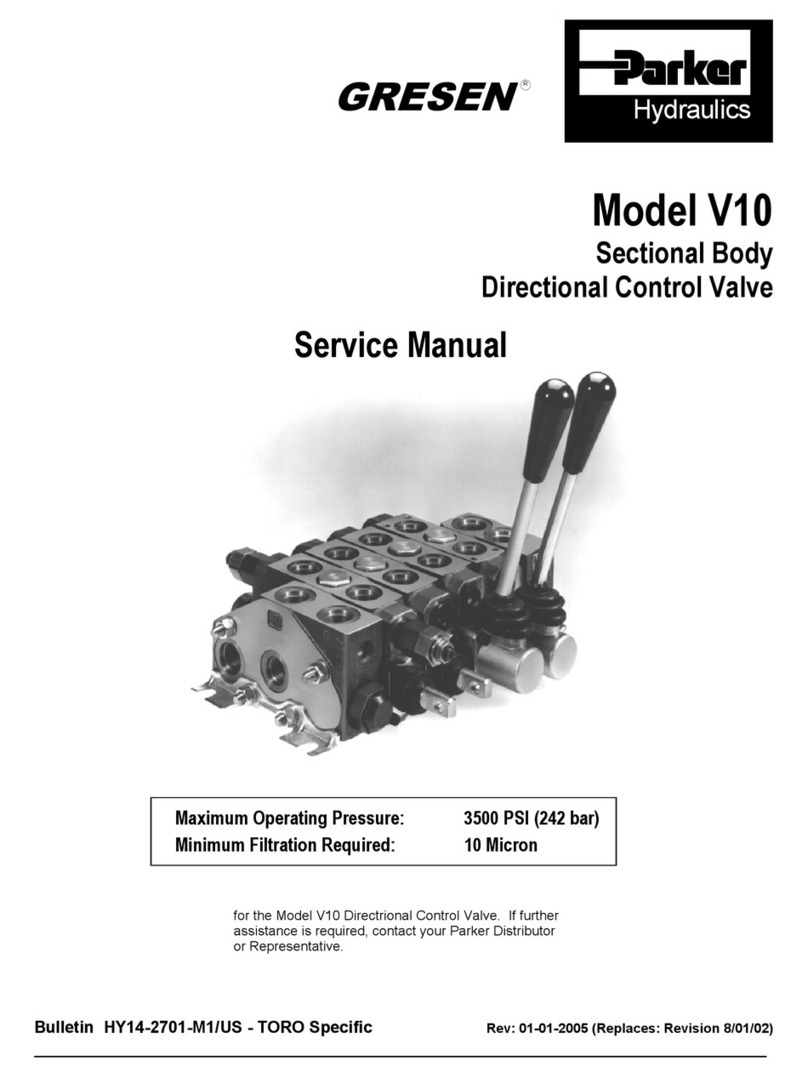
Parker Hydraulics
Parker Hydraulics GRESEN V10 Service manual
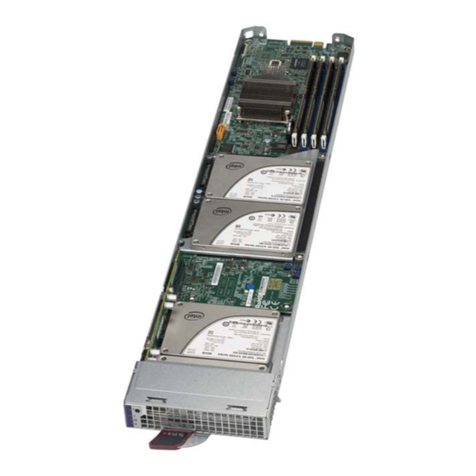
Supermicro
Supermicro MicroBlade MBI-6118G-T81X user manual
